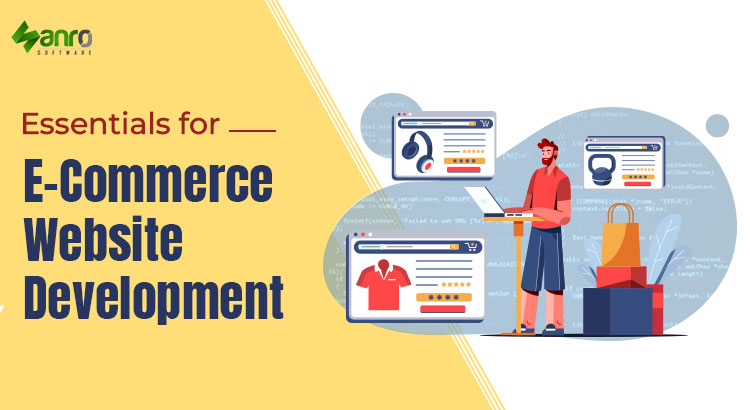26 Aug, 2023
According to reports, the number of e-commerce websites across the globe is 12-24 million. With such a huge estimation, getting lost on the internet is highly possible. That’s why you need a professional e-commerce web development service.
E-commerce sites are different from every other type of website, both technically and structurally. Starting from the design of an e-commerce site, the key components and online marketing goals are not the same as any other business website.
And rightly so, it requires seasoned web developers who know every aspect of e-commerce site development. If you’re interested to know the key components or essentials of e-commerce site development, here is a useful analysis that you can read.
In this post, we are going to share our insights on the essentials of e-commerce site development. We will explain all the necessary features that you must include during the process of your e-commerce site. So, just scroll down to know all about them.
- What is E-Commerce Development?
The process of creating an e-commerce site is known as e-commerce development. The process involves both front-end and back-end development. The design, UX, UI and every other phase of an e-commerce site development are equally important during the process.
Depending on the business niche and specific goals of a brand, its e-commerce site development features may vary to some extent. But, generally, developers use website development frameworks, content management tools, programming languages and more.
- What are the Essentials for E-Commerce Website Development?
- Mobile-Friendliness: Today, the smartphone is the first choice of internet users over PCs or laptops. And so, you need to make sure that your e-commerce site is easy to navigate on mobile phones. You can also plan to build a separate smartphone app to enhance the experience of all mobile users.
- Captivating Content: To ensure seamless communication with the site visitors, you need to focus on content creation in all forms such as text, images, videos, infographics etc. The blog page of your site can include interesting articles related to your domain. It can help you reach a huge number of visitors.
- Comprehensive Footers: To keep your website organized, you can include the footer space providing the names of your top services or products. Customers are always in search of this information as they enter your site. E-commerce brands also hyperlink their social media accounts in footers.
- Store Locator or Address: Your potential and existing buyers should be able to locate your physical address or local store, if any. It can not only help them rely on your business more but also help you increase your offline sales. Many brands provide this info in their Store Locator or Contact Us page.
- Product Search: Some of the top e-commerce websites such as Myntra and Amazon have this feature, helping the users navigate their site more conveniently. Product search or site search is a feature that allows visitors to search and find products or services they actually want.
- Product Filters: A very important feature to enhance the shopping experience of the customers is product filters. This feature allows the customers to narrow down their search by filtering it with product type, design, colour, etc. Filters can speed up their shopping process, saving time.
- Product Information: E-commerce web development revolves around making products more attractive to visitors. One of the easiest ways of doing so is by providing accurate product info. You can do the same by adding high-quality images, videos and descriptions on each product page.
- Customer Feedback: For any business that sells a product or offers any service online, customer feedback is everything. Highlighting the same on the e-commerce site can help businesses earn the trust of their potential customers. Customer feedback is a section that you can incorporate for it.
- Safe Payment Gateway: Today, internet users are more keen on finding convenient and safe payment methods. Hence, you need to focus on creating a safe payment gateway for your customers. Also, you need to provide them with multiple options including UPI, COD, debit card, EMI, etc.
- Order Tracking: According to reports, a huge number of online customers get disappointed when they can’t track their orders in real-time. Hence, to ensure that your customers are satisfied, including order tracking is a must in your e-commerce site. You can do it by discussing it with your web developer.
- Easy Return Policy: As a brand, you need to also focus on achieving the trust of your customers in the authenticity of your products by ensuring after-sales support. When they want to return something they aren’t satisfied with, providing an easy return policy can help you build customer’s trust.
- Loyalty Program: Conducting loyalty programs has remained one of the best ways of increasing customer retention for brands. On your e-commerce store, you can incorporate a page or a section that you can use for showcasing the best deals and offers for all your existing customers.
If you’re searching for a company that ensures all the above features, you can contact us at Sanro Soft. As one of the leading web development companies across the globe, we can deliver you top-notch e-commerce solutions that align with your specific needs. So, without waiting any further, get in touch with us today!


